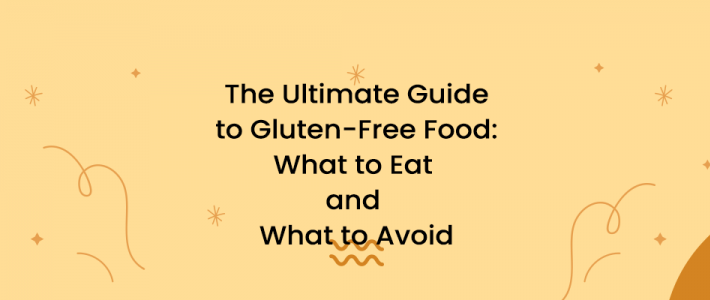
The Ultimate Guide to Gluten-Free Food: What to Eat and What to Avoid
Looking for gluten-free food options? Check out our ultimate guide, packed with information on what foods to eat and avoid on a gluten-free diet, as well as tips for living a healthy and gluten-free lifestyle.
A gluten-free diet is essential for people with celiac disease or gluten intolerance, but it can also be a healthy and nutritious way of eating for anyone. Gluten-free food options are widely available, but it can be challenging to know which foods to choose and which to avoid. In this article, we'll provide you with the ultimate guide to gluten-free food, including what to eat and what to avoid, as well as tips for living a healthy and gluten-free lifestyle.
What is Gluten-Free Food?
Gluten-free food is any food that does not contain gluten, a type of protein found in wheat, barley, and rye. Gluten can cause serious health problems for people with celiac disease or gluten intolerance, including damage to the small intestine, malnutrition, and other autoimmune disorders.
What Foods to Eat on a Gluten-Free Diet?
The good news is that there are many delicious and healthy foods that are naturally gluten-free, including:
- Fruits and vegetables
- Meat and poultry
- Fish and seafood
- Legumes and beans
- Dairy products
- Gluten-free grains (e.g., rice, quinoa, corn)
When choosing packaged or processed foods, always check the label to ensure that they are certified gluten-free. Be cautious of hidden sources of gluten, such as flavorings, fillers, and additives.
What Foods to Avoid on a Gluten-Free Diet?
Foods to avoid on a gluten-free diet include:
- Wheat, barley, and rye products (e.g., bread, pasta, cereals, beer)
- Processed and packaged foods that contain gluten (e.g., soups, sauces, dressings)
- Foods that are cross-contaminated with gluten (e.g., fried foods, baked goods, snack foods)
It's important to read labels carefully and ask questions when dining out to avoid accidentally consuming gluten.
Tips for Living a Healthy and Gluten-Free Lifestyle:
- Choose a variety of nutrient-dense foods to ensure that you are getting all the essential vitamins and minerals your body needs.
- Incorporate gluten-free grains, such as quinoa and brown rice, into your diet for additional fiber, protein, and other nutrients.
- Experiment with gluten-free flours, such as almond flour and coconut flour, to make baked goods and other dishes.
- Avoid highly processed and packaged foods, which can be high in sugar, salt, and unhealthy fats.
- Stay hydrated by drinking plenty of water throughout the day.
Conclusion:
Living a gluten-free lifestyle can be challenging, but it can also be rewarding and healthy. By choosing naturally gluten-free foods and certified gluten-free packaged foods, and avoiding hidden sources of gluten, you can enjoy a variety of delicious and nutritious meals. Incorporating nutrient-dense foods and staying hydrated can also help you feel your best. Use this guide as a starting point for your gluten-free journey and enjoy all the benefits of a healthy and gluten-free lifestyle.
38 Comment(s)
1
1
1
1
1
1
1
1
1
1
1
1
1
1
1
1
1
1
1
1
1
1
1
1
1
1
1
1
1
1
1
1
1
1
1
1
1
1
1
1
1
1
1
1
1
1
1
1
1
1
1
1
1
1
1
1
1
1
1
1
1
1
1
1
1
1
1
1
1
1
1
1
1
1
1
1
1
1
1
1
1
1
1
1
1
1
1
1
1
1
1
1
1
1
1
1
1
1
1
1
1
1
1
1
1
1
1
1
1
1
1
1
1
1
1
1
1
1
1
1
1
1
1
1
1
1
1
1
1
1
1
1
1
1
1
1
1
1
1
1
1
1
1
1
1
1
1
1
1
Leave a Comment